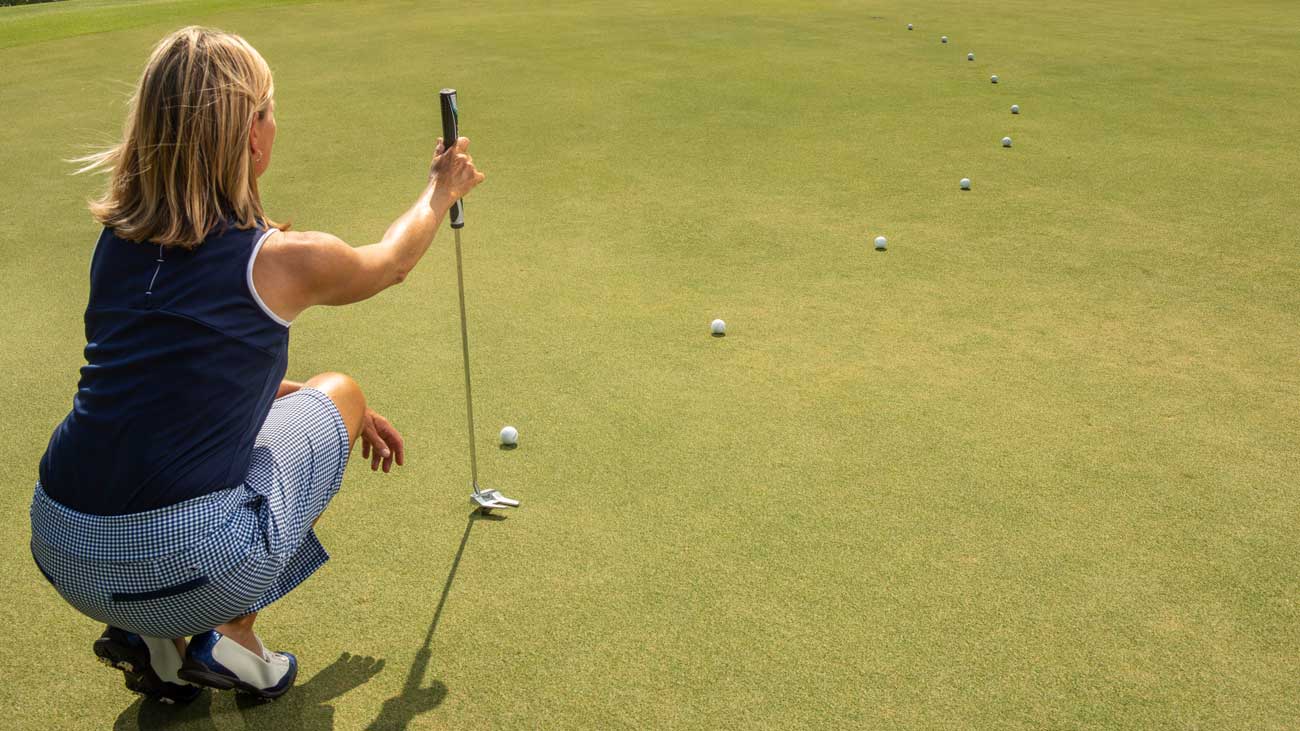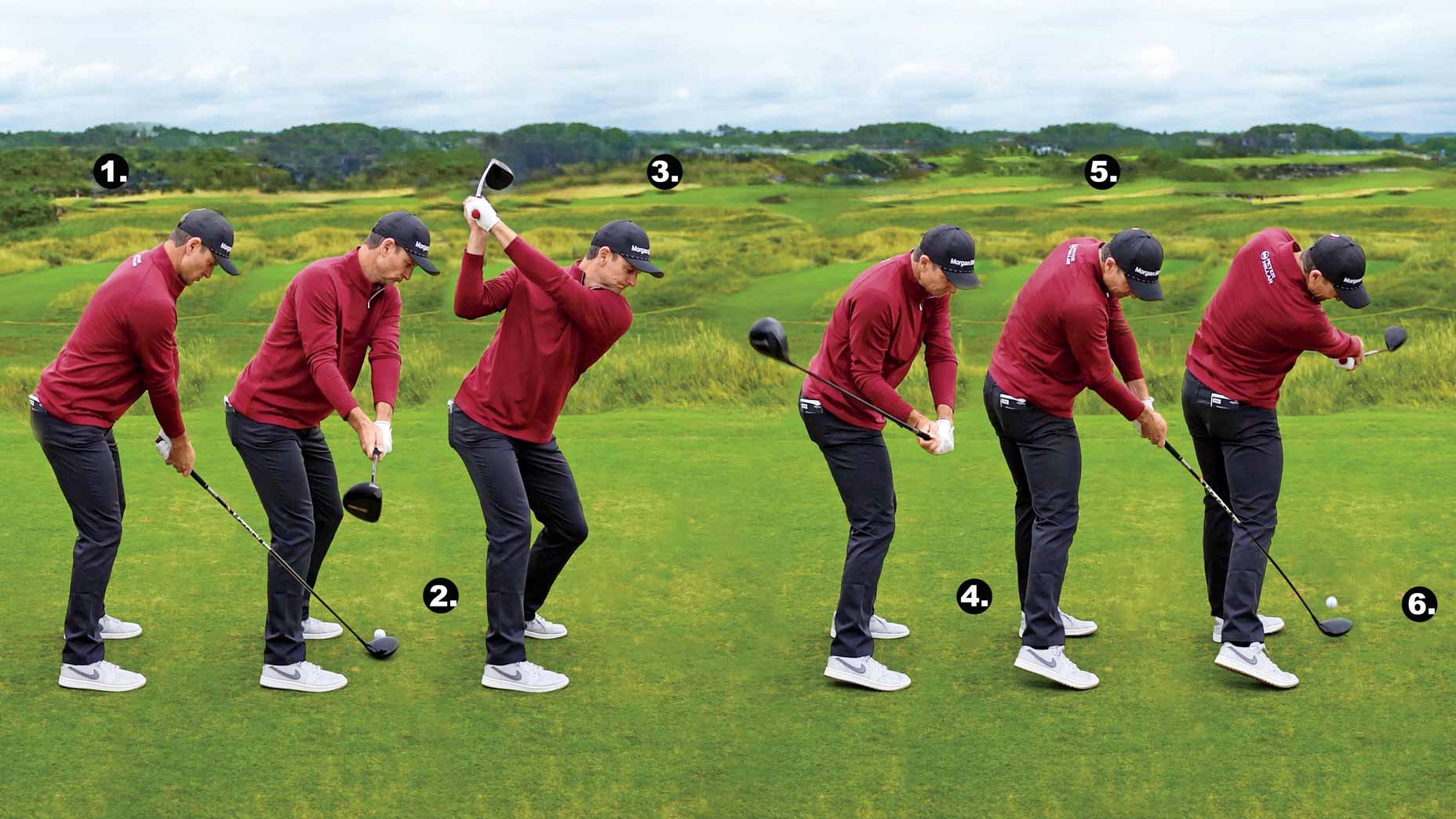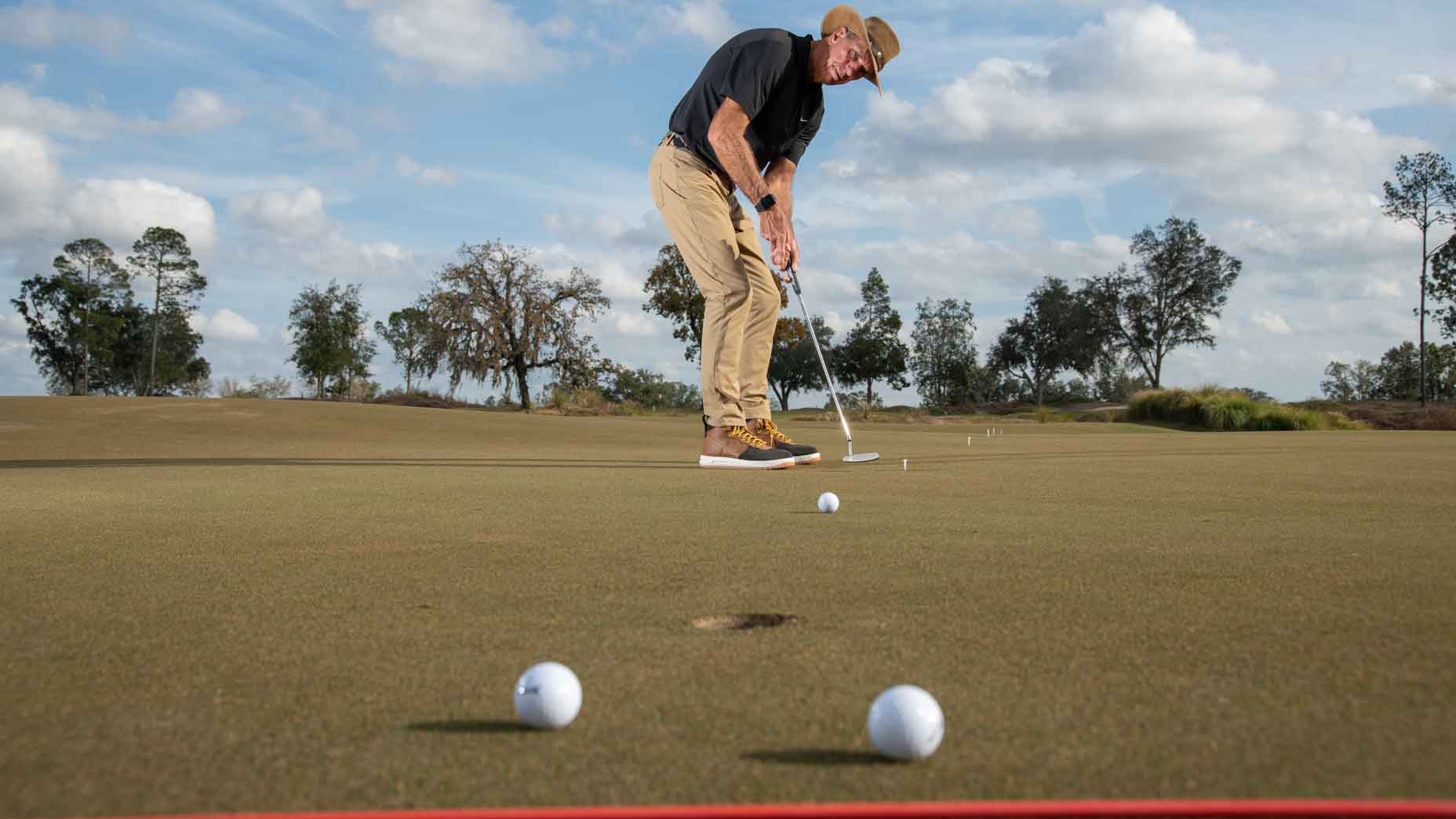My students regularly ask me, How can I improve at green-reading? They often say they just can’t see the lines. To which I say, yes, there’s an art to the practice, but it’s also a science. Try the following methods to help improve your green-reading and make more putts.
1. Know that greens are built for drainage
Course architects have many responsibilities beyond just creating masterpieces. Greens are built to drain well so that when it rains the water does not pool. When you understand this, you can start to better see that greens always have some degree of tilt and side slope. You can learn a lot about the design and movement of a green if you watch how water runs over it.
2. Start reading before you arrive on the green
You can start to read the predominant tilt of the green as you approach it. You may see one side is much higher than the other, or spot high points and low points. Greens often tilt toward the fairway, pitching from back to front. Detecting many of these elements can be easier from a vantage point in the fairway.

3. Priority No. 1: distance and speed
Controlling your distance should be top priority. If you control distance well, even if you’re off line a bit, you are still likely to save strokes by limiting three-putts. First, determine if your putt is uphill, downhill or flat. If you cannot see it with your eye, get in the habit of walking past the cup to your ball. Your feet can give you a sense of whether you’re on an upslope or downslope.
4. Study the area around your line
Determining the side slope of a putt can be challenging if you look only at the line between the ball and the cup. I find it easier to read putts if if I compare the area about 3 feet to the right of the line with the area 3 feet to the left. Looking at the two sides, it becomes easier to see which is higher. Obviously you will always want to aim toward the high side.
5. ‘Sectionalize’ longer putts
On longer putts, you may have more than one break. For example, one part may be right-to-left and the other left-to-right. Divide longer putts into two or three sections. If you apply the same line-reading procedure we outlined above to each “section” of the putt, you can add these together for an accurate read. If I had, say, two sections in which the right side was higher and one in which the left was higher, I would know to aim just a bit to the right.

6. Walk in small circles
On shorter putts, it can be helpful to walk in a circular path on the line directly behind your ball. This will help you to feel whether you’re walking uphill or down. This will also help you to feel a subtle tilt that you might not see.
7. Wide stance directly behind the ball
On shorter putts, also try standing directly behind your ball and facing the hole with a wide stance. Then rock gently back and forth; your feet should tell you which side of the line is higher. Once again, aim for the high side of the cup.
Why this common green-reading strategy doesn’t work, according to a Top 100 TeacherBy: Jessica Marksbury , Carol Preisinger, Top 100 Teacher
8. Play more break on downhill putts
Adjust the amount of break you play contingent upon whether your putt is uphill or down. Play more break on downhill putts, because your ball will be rotating more slowly and thus gravity will have a greater influence. Conversely, for uphill putts, play less break, because your ball is rotating more quickly and thus gravity will have less influence.
9. Dial in your tilt-o-meter
When determining the severity of tilt, keep it simple: Is the higher side just a little bit higher than the hole, somewhat higher or a lot higher? The greater the degree of tilt, the more break you should play. Note that faster greens break more because of less friction between the ball and grass.
10. Technology
When it comes to green-reading, there’s no shame in leaning on tech! One of the companies for which I consult is GolfLogix (which is also a GOLF.com affiliate). The GolfLogix app has Tour-quality green data. App users need only place the ball and pin in the appropriate locations and the app reads the putt for you, providing both direction and distance. You can use this aid only in practice rounds, but over time you may find that the app hones your own green-reading technique.











